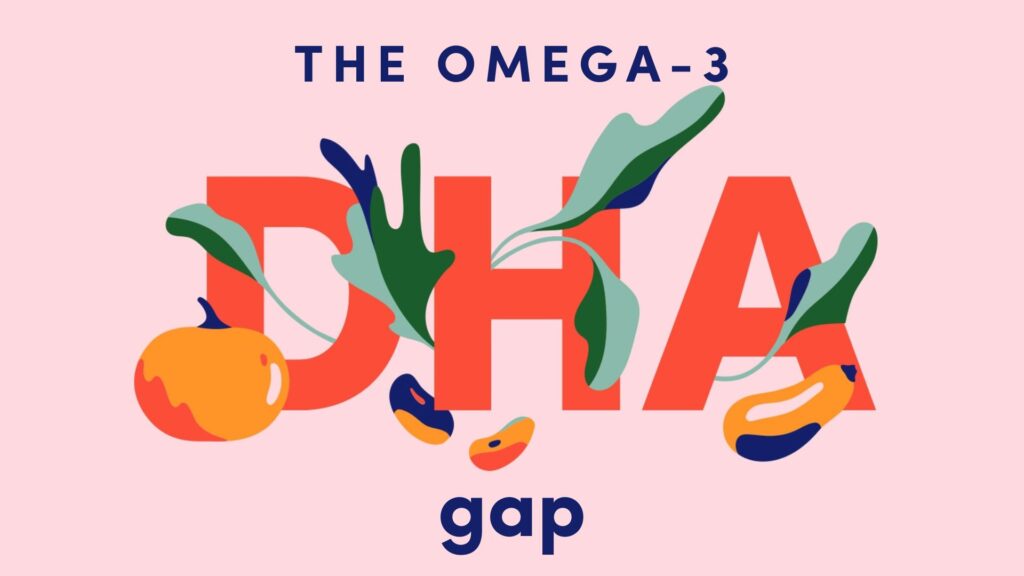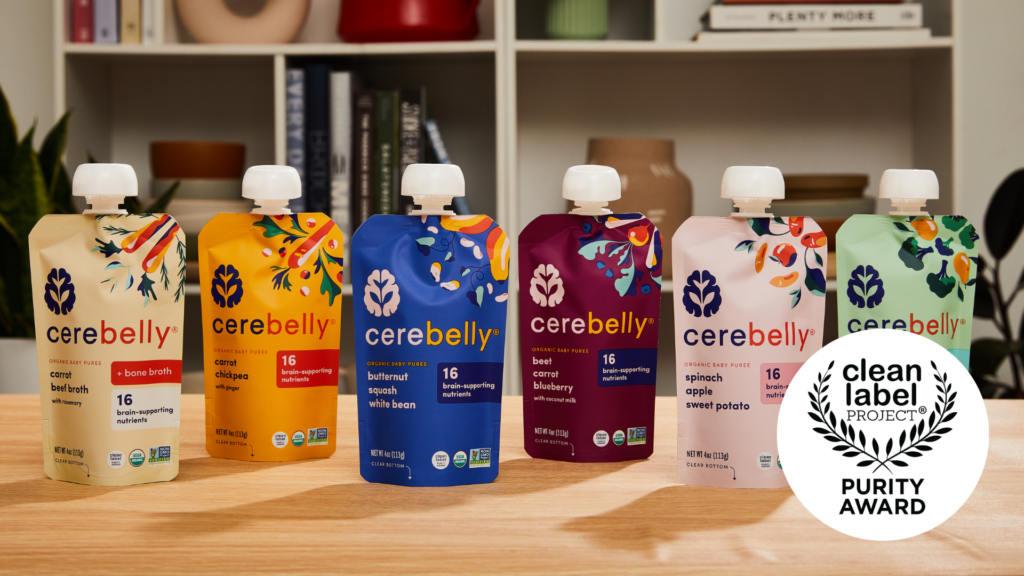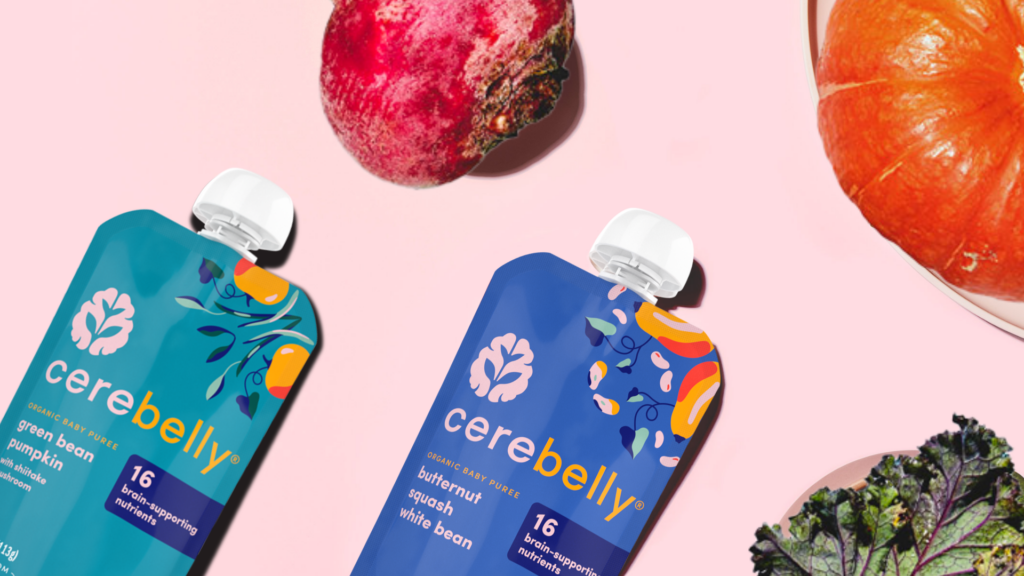The Omega-3 DHA Gap
*Disclaimer: this article is not meant to be individual medical/nutrition advice but for education purposes only. Each child’s nutritional needs are different.
Do you know what the omega-3 DHA gap is? No? Then I’m glad you’re here! Your baby is lucky because with the info below, you’ll be giving them a head start to a brainy beginning.
First let’s talk about DHA. It stands for docosahexanoic acid.
Say it out loud, it’s got a nice ring to it (or maybe i’ve just been studying it for too long!). Docosahexanoic acid. It’s one type of omega-3 fatty acid, and it’s the most important omega-3 for babies brain and eye development. In fact, it’s essential. The ability of each brain cell to mature and communicate with other brain cells, depends, in part, on the amount of DHA available.
Breast milk DHA content is extremely variable, but generally it’s a good source of DHA and is transferred readily in breast milk to baby. Infant formula DHA content is based on data from DHA content of breast milk.
Interestingly, there is discussion in the nutritional science community that perhaps formula doesn’t have enough DHA because formula made in North America is based on the DHA content of breastmilk from women in western countries, who generally do not eat enough foods with DHA. Nevertheless, this is how babies get DHA early in life.
But what about later in infancy and into toddlerhood? Once babies start eating food at mealtimes, they will naturally take less formula/breast milk. This means they will be getting less DHA. But…DHA requirements do not change from ages 6mos-2yrs.1 Brain development is still in its critical window of opportunity. And so they need to continue getting DHA daily.
Your little one’s brain is going through a growth spurt. The World Health Organization (WHO) experts recommend maintaining the amount of dietary DHA from ages 0-2yrs and beyond. (1)
The period of time from when babies wean off breast milk/formula to the time when they are consistently eating DHA-rich whole foods — is what I call the ‘DHA gap’. And depending on the sophistication of your little one’s palate, this gap can last a long time. [Perhaps even into adulthood–welp! Let that sink in for a sec].
This article will help you understand the omega-3 DHA gap

How do I get enough DHA in my little one’s diet?
DHA is mostly found in fatty fish (salmon, arctic char, anchovies, cod, halibut, mackerel, trout), enriched eggs, fortified milk and few other products, and algal oil. These foods are often challenging for babies/toddlers to accept on a regular basis.
And even if you are lucky enough to have a fish eating kid, it’s not likely on the menu multiple times per week. So once breast milk/formula has stopped, it is hard for them to get enough DHA from food.
How can we ensure that our kids are getting enough DHA to nourish their brain, eyes and nervous system during a time when they are growing at a rate faster than any other time in their life?
If you’ve never considered this, and are now in a light sweat…don’t panic.

What you can do:
First, know that any educated choice you make when feeding your children is a good one. We all make personal choices about feeding our kids; fish or no fish, meat or no meat, eggs or no eggs. There is no ‘one way’ to feed our kids.
Second, Begin offering whole foods that are rich in DHA:
- oily fish such as salmon, sardines, arctic char
- omega 3 (EPA/DHA) enriched eggs
If these foods are not accepted right away, don’t worry, new foods can take around 10 (or more) tries before they’re accepted.
Are you still in the DHA gap?
Look for baby foods that contain DHA. How do you know if it’s there? Look at the ingredients in your baby food. Look for DHA specifically on the label.
Some foods are advertised as having ‘omega 3s’ but they only contain ALA (another type of omega 3). This is not good enough. Eating foods with ALA, like walnuts, flaxseed or chia seed, (which converts to a very small amount of DHA in the body) will not satisfy the brains’ greedy need for DHA.
Our babies and toddlers need DHA rich/enriched food to meet their needs for brain development.

Final Thoughts
If you want a deeper dive into why your baby needs DHA and not just ALA, click here.
I know there’s a lot to think about when feeding a baby. When I was a new mom, even as a pediatric dietitian, I didn’t wake up in the morning thinking “how am I going to get enough DHA into my baby today?”
And I wouldn’t expect anyone to. But what you can do is take the above knowledge and try to apply it to your lifestyle.
Choose DHA rich foods often for yourself and your whole family. When you buy baby foods, you should always check the ingredients anyway. Now you know to also look for DHA!
Reference:
- FAO/WHO Expert Consultation on Fats and Fatty Acids in Human Nutrition. Nov 2008. 10-14. WHO, Geneva.
About
the author
Stacey Segal BScA, MSc, RD

Stacey is a pediatric dietitian and a mom of two little eaters. Her career has been dedicated to nourishing babies, toddlers and kids. She’s a staff dietitian at The Hospital for Sick Children, Toronto, specializing in neuroscience. Stacey is also the founder of the Prenatal and Pediatric Nutrition Clinic at GSH Medical, and a nutrition writer for AboutKidsHealth website. Being a mom herself, she has experienced the challenges that come with feeding kids. She’s passionate about helping families raise well nourished kids right from the start!
Have more questions? Send us an email at support@cerebelly.com and we will be sure to get back to you!



